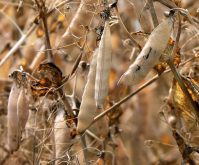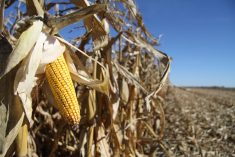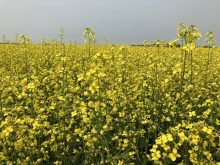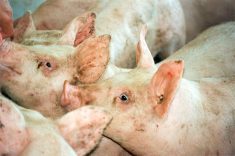SAN ANTONIO, Texas – Neil Young was right. Rust never sleeps.
A new virulent strain of the fungal disease flourishing in East Africa poses a significant threat to world wheat production, said Kay Simmons, national program leader for grain crops with the U.S. Department of Agriculture’s Agricultural Research Service.
“Within the last year or two, they are really beginning to see considerable losses in East Africa,” Simmons told delegates attending the North American Grain Congress.
First discovered in Uganda in 1999, the new race of stem rust has since been found in Kenya and Ethiopia.
Read Also

Bond market seen as crop price threat
A grain market analyst believes the bond market is about to collapse and that could drive down commodity values.
The big concern is that the disease will eventually spread to major wheat production regions like Pakistan, India and China, where there appears to be little resistance to the most virulent form of the fungus discovered in the last 50 years.
Simmons said there is an outside chance disease spores could travel across the Pacific Ocean carried on jet streams or in grain shipments bound for North America.
An African screening program showed that 70 percent of the bread wheat grown in the United States would be vulnerable to the new strain dubbed Ug99.
“Whatever mutation happened makes it able to overcome the resistance of many, many varieties that are currently grown,” said Simmons.
Barley varieties are also susceptible to the disease although durum has demonstrated good resistance.
Simmons said the upside is there are a few lines of wheat in every market class grown in Canada and the United States that are resistant to the new strain of stem rust.
Breeders can use them to build a broader resistance to the yield-limiting disease in future releases.
She stressed how important it is that breeders already know what needs to be done to combat the potential problem rather than starting from scratch trying to find a source of resistance.
“This is really good news,” said Simmons.
The other encouraging development is that a global rust initiative was launched in the spring of 2005 to assess the vulnerability of wheat crops around the world, monitor for changes in the pathogen and to accelerate resistance in breeding programs.
The initiative will also tackle stripe and leaf rust, diseases that have become severe problems in North American wheat and barley crops.
Simmons said U.S. president George Bush has set aside $3.88 million for a soybean and wheat rust initiative in his 2007 budget proposal.
That is on top of $500,000 already received from the U.S. government in 2006 to address the growing stripe rust problem.
While she wanted delegates attending the National Association of Wheat Growers portion of the Grain Congress to be aware of the serious threat posed by Ug99, Simmons also felt it was important to let them know about the steps taken to keep the disease in check.
















